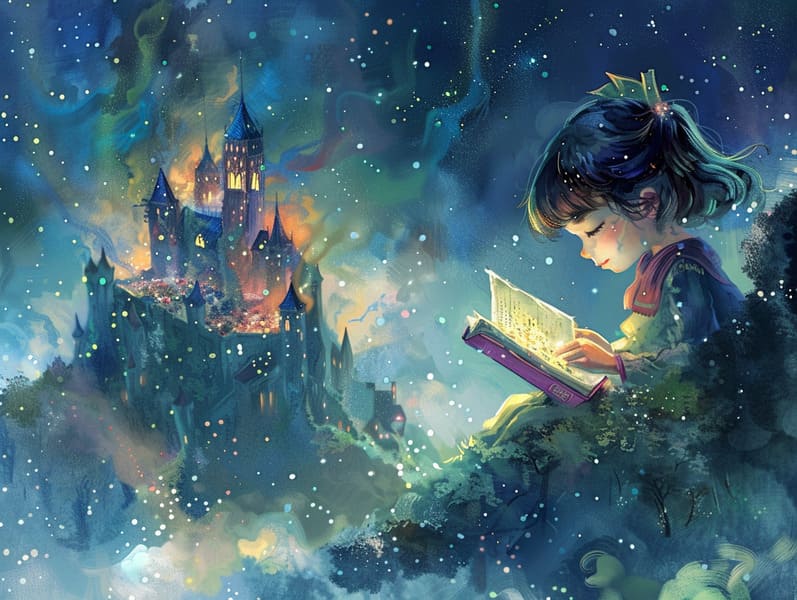The Genesis of Children's Fairy Tales with Its Unchanging Mystique.
The Genesis of Children's Fairy Tales with Its Unchanging Mystique.
Blog Article

Old fairy tales have ancient roots. These tales have been transmitted from one generation to the next well before they were ever inscribed. They emerged from a variety of societies, including European traditions. They were initially conveyed among mature audiences, often carrying themes and messages relevant to the societal norms and beliefs of the time.
The Grimm brothers, Jacob and Wilhelm, were among the first to assemble many of these beloved narratives. Their collection, "Grimm's Folk Tales," included narratives like "Cinder Maid," "Hansel and Grethel," and "The True Story of Snow White," which have since become essentials in the world of beloved fairy tales. Similarly, Hans Christian Andersen's delightful tales, such as "The Story of the Little Mermaid," and "The Ugly Duckling," have stolen hearts worldwide, establishing their place in the pantheon of timeless fairy tales.
Despite being ancient, these tales remain as pertinent as ever, especially as nighttime stories for kids. These charming stories are now available in various formats, including beautifully illustrated books, captivating animations, and digital fairy tales.
Their enduring popularity can be attributed to several charming aspects:
Important Morals: Timeless fairy tales often teach important moral lessons. Fairy tales like "The Shepherd Boy and the Wolf" teach the merit of sincerity, while "The Race of the Tortoise and the Hare" demonstrate the merits of perseverance and modesty. These stories offer young readers clear distinctions between right and wrong, helping to shape their moral compass in a tender yet meaningful way.
Sympathy and Perception: Traditional fairy tales frequently include characters facing challenges and problems, prompting young readers to relate with their struggles and encourage their triumphs. For instance, "Beauty and the Beast" points out the benefit of seeing beyond looks to appreciate the inner self of a soul, developing tenderness and comprehension.
Cultural Awareness: Many fairy tales are infused with the cultural contexts from which they emerged. Reading these fairy tales can provide delightful insights into different cultures, fostering a sense of cultural understanding and respect.
Inventiveness and Fantasy: The fantasy-filled elements in ancient fairy tales—magical spells—fuel children’s innovations. These narratives take readers to enchanted realms, stimulating creative dreams and a sense of mystery that endures a lifetime.
Old fairy tales are not only delightful but also pedagogical. They function as whimsical tools in cultivating various brain and heart skills in kids. When classic fairy tales are spoken, they enhance language development by presenting new lexicon and detailed sentence structures. This practice also enhances auditory skills and mindfulness, as young readers remain attentive, anxious to see what happens next.
Furthermore, examining the themes and characters of old fairy tales can strengthen problem-solving abilities and cognitive skills. Little ones are taught to pinpoint patterns, foresee events, and comprehend cause and effect. These discussions also help children verbalize their thoughts and feelings, advancing their emotional intelligence.
In today’s online age, the proliferation of free fairy tales online has made these tales more accessible than ever. Online platforms and web apps supply large libraries of classic fairy tales that can be accessed or listened on anytime, anywhere. Fairy tales recited are particularly favored, sharing an captivating way for the young to engage with these captivating stories. Read-aloud books and these guys read-aloud videos carry characters and settings to life, often complemented by fantastical audio effects and instrumentals that elevate the narrative adventure.
The timeless charm of ancient fairy tales lies in their ability to modify to contemporary times while staying true to their basic principles. Contemporary updates of these fairy tales often showcase more different characters and modern settings, making them relatable to today’s audience. However, the essential messages of valour, benevolence, and justice remain unchanged, continuing to move young readers of all ages.
Old fairy tales also offer a sense of peace and familiarity. They confer upon a tidy narrative with a clear beginning, middle, and end, often drawing to a close with the solving of conflicts and the triumph of right over wrong. This certainty can be encouraging for young readers, imparting a sense of solidity in an fluid world.
Timeless fairy tales continue to delight and train new generations, maintaining their enchantment and value in modern society. As kids' bedtime tales, they grant access to a perfect blend of captivation and insight, enhancing moral values, empathy, and creativity. The prevalence of online fairy tales and the well-received status of fairy tales read aloud affirm that these old fairy tales remain available to new generations.
By perpetuating and making known these tales, we continue to esteem the rich tapestry of cultural legacy and cultural heritage. Whether you are exploring a colorful picture book, perusing a digital library, or listening through an read-aloud book, the allure of popular fairy tales is always within reach. These narratives illustrate of the unfading impact of fairy tales and its ability to join us across centuries and lands.
Whether you are enjoying a vibrantly illustrated book, enjoying a virtual library, or hearing an sound book, the grandeur of ancient fairy tales is always within reach.
These narratives point out of the unwavering essence of tales and its ability to unify us across centuries and lands, creating a bond that captivates and teaches alike.